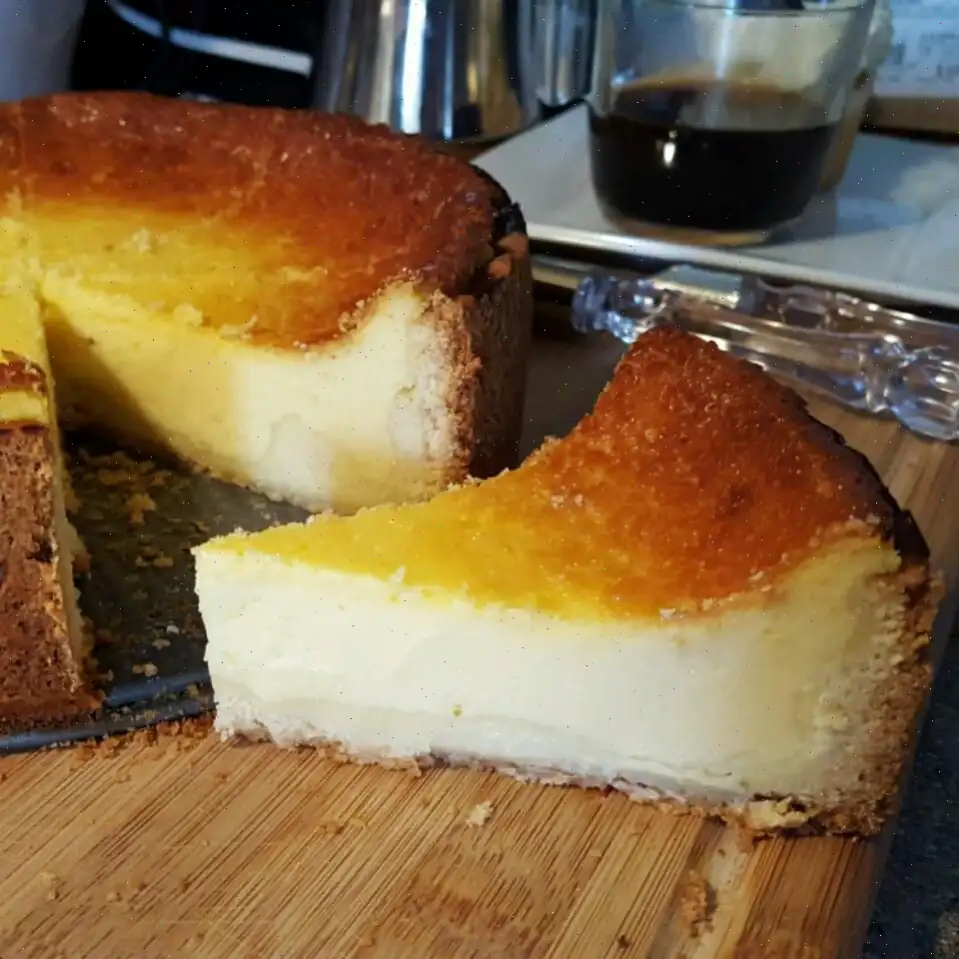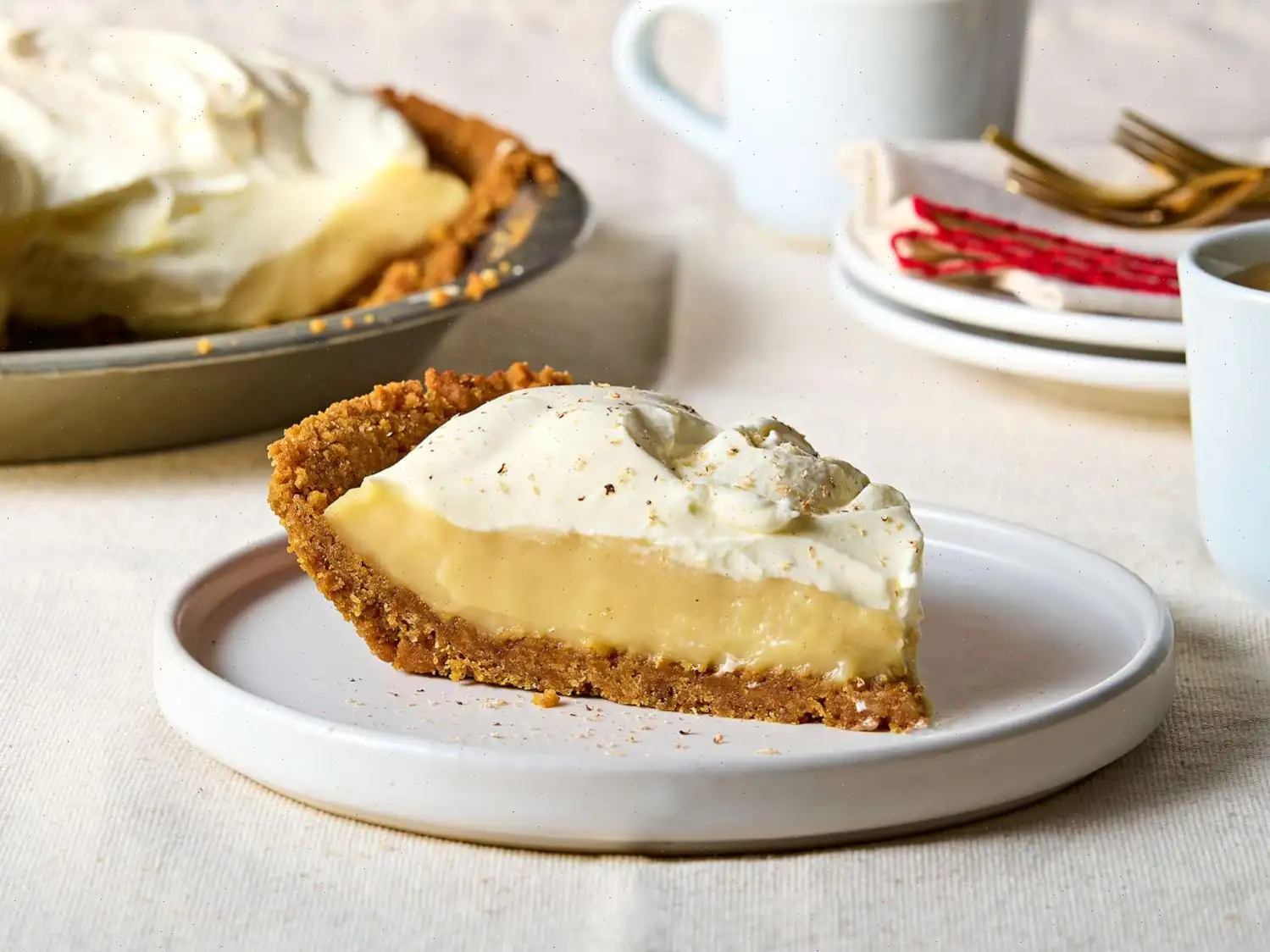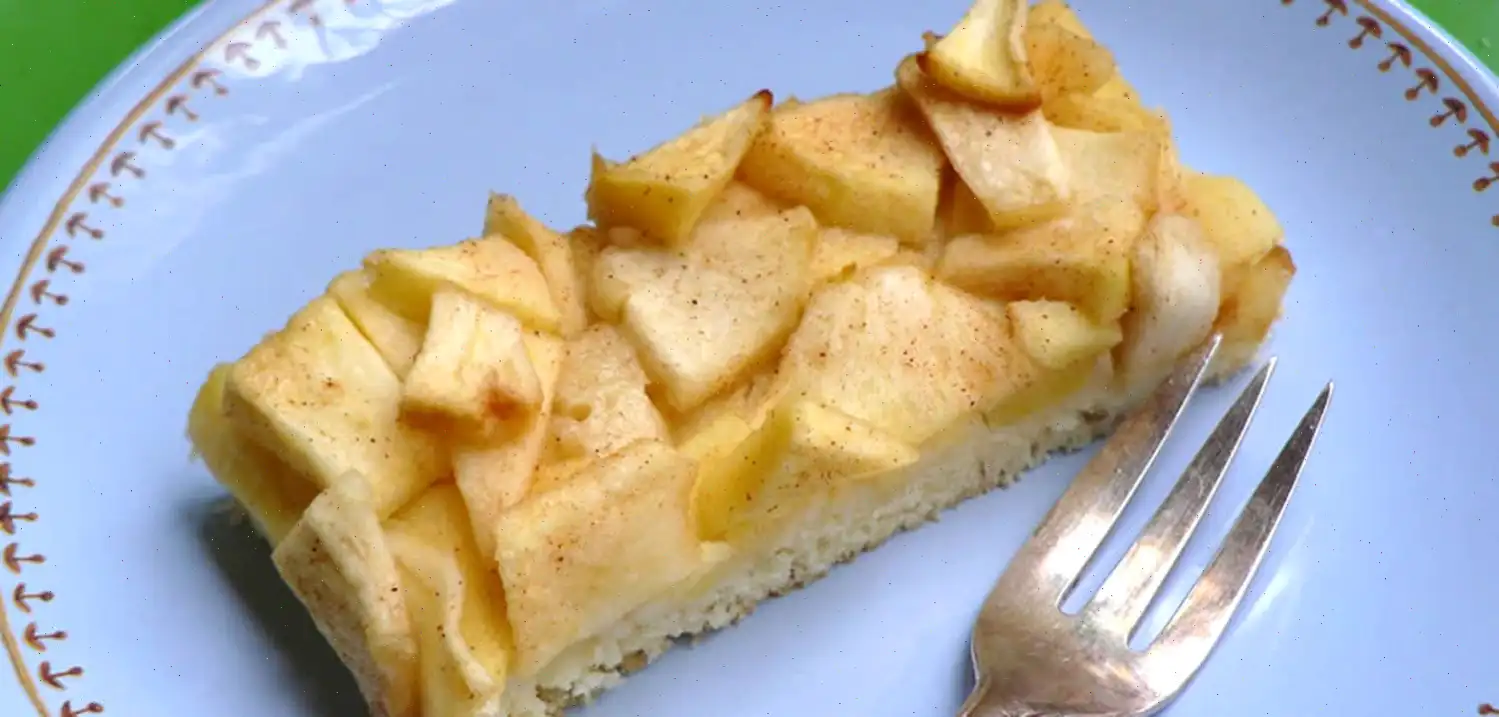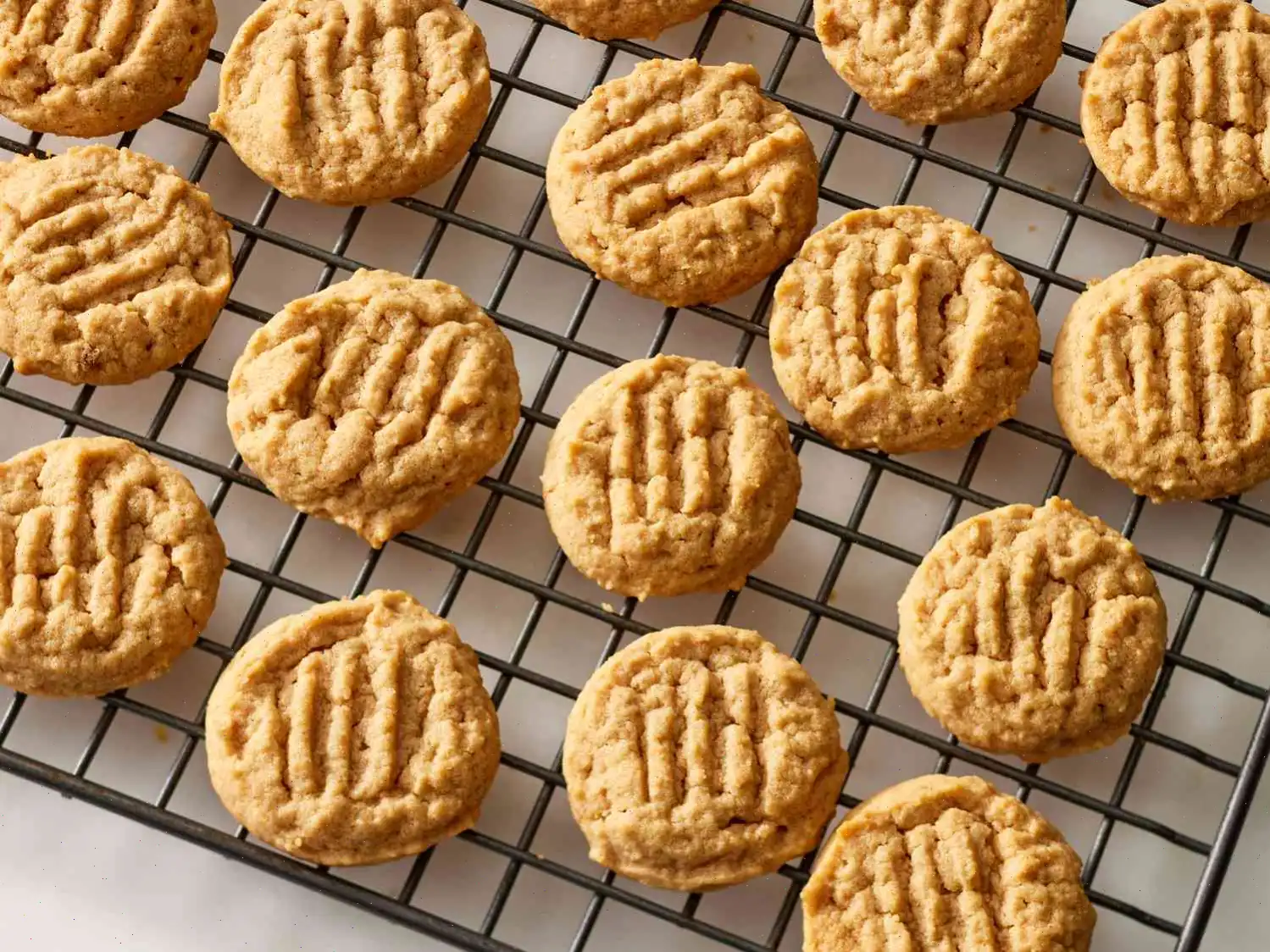
Isolde's German Cheesecake Recipe
Ingredients
- 1 1/4 cups white sugar, divided
- 3/8 cup unsalted butter
- 2 eggs, divided
- 1 1/3 cups all-purpose flour
- 1 teaspoon baking powder
- 18 ounces quark
- 1 (3 ounce) package non-instant vanilla pudding mix
- 3 tablespoons oil
- 1 packet vanilla sugar
- 2 1/8 cups milk
- 2 egg yolks
- 2 tablespoons fresh lemon juice
Directions
Step 1: Preheat the oven to 350F (175C). Lightly grease a 9-inch springform pan.
Step 2: In a medium bowl, beat 1/2 cup of white sugar and butter together until smooth. Add 1 egg and mix well.
Step 3: Stir in flour and baking powder, then knead into a dough. Press the dough into the bottom and up the sides of the prepared pan to form a crust.
Step 4: In a large bowl, combine quark, the remaining 3/4 cup white sugar, vanilla pudding mix, oil, and the packet of vanilla sugar. Stir until smooth.
Step 5: Add milk, the remaining egg, egg yolks, and lemon juice to the quark mixture. Stir until well combined.
Step 6: Pour the quark filling into the prepared crust.
Step 7: Bake in the preheated oven for about 1 hour, or until the filling no longer moves when you gently shake the pan.
Nutrition Facts (per serving)
- Calories: 341
- Fat: 16g (20% DV)
- Saturated Fat: 5g (27% DV)
- Cholesterol: 98mg (33% DV)
- Sodium: 207mg (9% DV)
- Total Carbohydrate: 42g (15% DV)
- Dietary Fiber: 0g (1% DV)
- Total Sugars: 29g
- Protein: 9g (18% DV)
- Vitamin C: 1mg (1% DV)
- Calcium: 122mg (9% DV)
- Iron: 1mg (6% DV)
- Potassium: 152mg (3% DV)
* Percent Daily Values are based on a 2,000 calorie diet. Your daily values may be higher or lower depending on your calorie needs.
Isolde's German Cheesecake, a timeless recipe originating from Germany, is a delightful dessert that boasts a smooth, creamy texture thanks to its star ingredientquark. Unlike many cheesecakes around the world, this one does not use cream cheese but rather a soft, tangy cheese, creating a unique flavor that distinguishes it from others. The cheesecake is baked on a buttery, crumbly crust and is lightly flavored with lemon juice for that signature refreshing touch.
History and Origins
The roots of German cheesecake can be traced back centuries, with the recipe evolving over time. The use of quark, a fresh dairy product common in Central and Eastern European cuisine, is a defining feature. Quark, which is similar to cottage cheese but smoother, adds a subtle tanginess that sets the German cheesecake apart from other variations. German cheesecakes are particularly popular in the southwestern regions of Germany, such as Bavaria, where dairy farming is prevalent. Over time, the cheesecake spread throughout the country, with each region adding its own unique twists, like adding fruit or altering the crust.
Regional Variations
In Germany, cheesecakes are enjoyed across the country, but they can vary based on regional preferences. In the southern regions, especially Bavaria, the quark-based cheesecake is most common. In contrast, the northern regions often prefer a firmer cheesecake made with cream cheese. Some variations of the cake incorporate fruit such as strawberries, cherries, or currants, which are often served fresh on top of the cheesecake, adding a burst of color and flavor. Isolde's recipe sticks to the traditional roots, focusing on the smooth, rich flavor of quark with a minimalistic crust.
How It Differs from Other Cheesecakes
One of the key differences between Isolde's German Cheesecake and other types of cheesecakes lies in its use of quark. While many cheesecakes, especially in the United States, rely on cream cheese as the primary dairy ingredient, quark offers a lighter, less creamy texture. This gives the German cheesecake a refreshing, tangy flavor profile that is quite different from the richness of cream cheese-based cakes. Additionally, the crust in this version is often thinner and more delicate, relying on butter and flour rather than the heavy graham cracker crust commonly seen in American cheesecakes.
Where Isolde's Cheesecake is Typically Served
Isolde's German Cheesecake is often enjoyed as a dessert after a hearty German meal, or as part of a festive gathering. It is common to find this cheesecake at German bakeries, especially during holidays or celebrations like Easter or Christmas. In Germany, this cake is frequently served alongside coffee, either as part of a casual afternoon snack or at a more formal gathering. Its popularity has also spread internationally, and it can be found in German restaurants or cafes in many parts of the world.
Interesting Facts About German Cheesecake
- In Germany, quark is a staple in many recipes, both savory and sweet. It is used in soups, cakes, and even as a spread on bread.
- The cheesecake's crust is typically made with simple ingredients like butter, sugar, and flour, making it easy to prepare and bake.
- German cheesecakes often do not use a water bath for baking, unlike their American counterparts, which helps achieve a firmer, more defined texture.
- Although quark is a key ingredient, it can sometimes be substituted with other soft cheeses like ricotta or Greek yogurt if quark is not available.
- German cheesecakes are typically less sweet than their American relatives, making them a perfect complement to a cup of coffee or tea.
Conclusion
Whether you're reminiscing about a trip to Germany or simply exploring new culinary traditions, Isolde's German Cheesecake offers a delicious and authentic taste of German culture. Its light, tangy flavor and buttery crust make it a unique dessert that stands apart from other cheesecakes, and its simplicity and rich history are sure to leave a lasting impression on anyone who tries it. So, next time you're in the mood for a cheesecake, why not try a slice of this traditional German treat?
FAQ about Isolde's German Cheesecake Recipe
Comments
Kenneth Allen
01/08/2024 06:42:56 PM
This cheesecake was incredibly reminiscent of my grandmother's recipe, I was amazed! Thankfully, I was able to source Quark, vanilla sugar, and non-instant vanilla pudding at a nearby German deli (Old Heidelberg, for those in the Phoenix area). I followed the recipe precisely, except for the addition of "drunk raisins" (raisins soaked in rum) into the batter, just like my grandmother does. The result was outstanding. I'm thrilled that I can now replicate the cheesecake that I used to enjoy only during my trips to Germany. Thank you so much!
Thomas Baker
03/19/2025 05:59:29 AM
I haven't tested the recipe yet, but it looks promising. As a German, I bake a classic German cheesecake nearly three times a month. My husband adores it. Did you know how easy it is to make Quark at home? All you need is milk, cultures, an oven, and a cheesecloth for a large batch or buttermilk and a yogurt maker for a smaller one. I highly recommend using milk and cultures; the result is on par with or even better than store-bought Quark in Germany.








